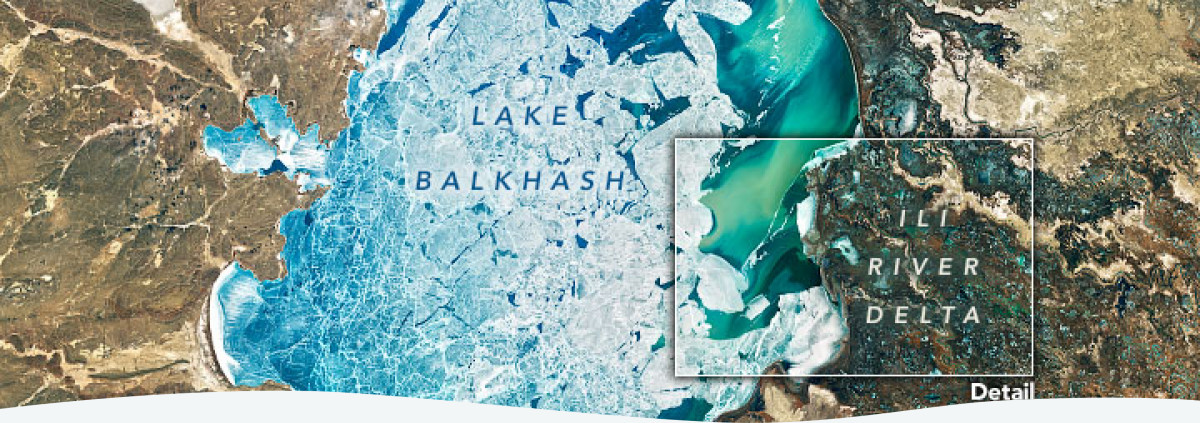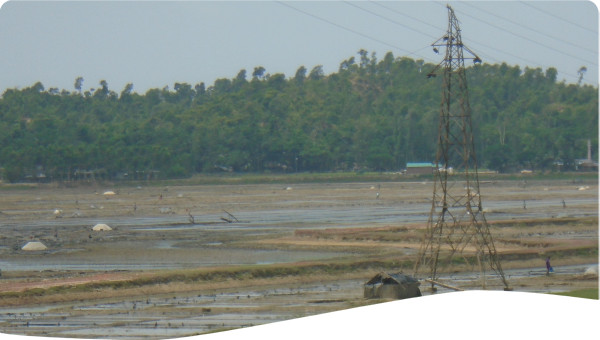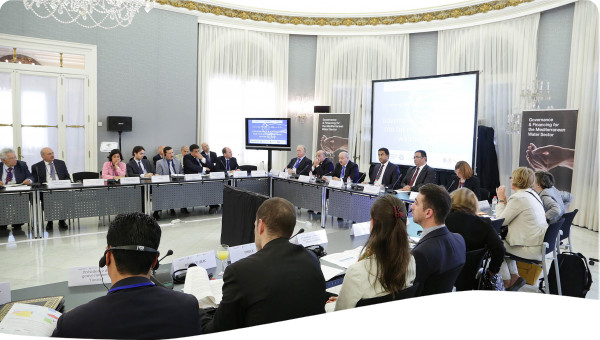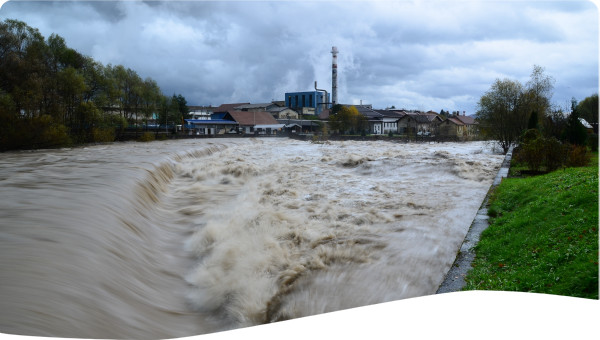Kazakhstan heavily relies on transboundary waters, however, the inflow from neighboring countries is decreasing due to their economic and social development. The southern and western regions, where over half the population lives, are most dependent on transboundary flows. The Ili-Balkhash River basin, shared between Kazakhstan and China, faces challenges due to reduced flow from the Ili River, a major contributor to Balkhash Lake. Agricultural expansion in China has further diminished water availability. Progress in legal frameworks and IWRM practices, along with transboundary dialogues, offers hope for improving water depletion and quality in the Ili-Balkhash basin.
Kazakhstan heavily relies on transboundary waters from China, Russia, Uzbekistan, and Kyrgyzstan, accounting for 44% of surface water inflow (FAO Aquastat, 2022). However, the inflow from transboundary rivers is declining due to the rapid economic and social development of neighboring countries. The southern and western regions, home to over half of the country's population, are particularly dependent on these flows.
The Ili-Balkhash River basin, shared by Kazakhstan and China, spans a vast area in southeastern Kazakhstan and northwestern China. In Kazakhstan, it encompasses four regions within the Almaty region, Zhambyl, Karaganda, and East Kazakhstan Regions, as well as the northwestern part of China's Xinjiang Uygur Autonomous Region (Figure 1).
Figure 1. Map of the Ili-Balkhash river basin (de Boer et al, 2021)
The Ili River, a major contributor to Balkhash Lake's water, has become a significant cooperation concern. Its runoff from China has consistently decreased since the 1970s, while agricultural land along the Ili has expanded by 30% in the last two decades (Figure 2; Thorsberg, 2021).
Figure 2. Increase of irrigated land area in Ili-Balkhash River basin in China in years 1984-2023. Source: Google Earth, created by Aigerim Karibay, Intern, GWP Transboundary team.
Latest surface water testing in the Kazakh part of the Ili-Balkhash basin shows unsafe drinking water but usable for recreation, irrigation, and industry (Kazhydromet, 2023). Pollution sources include enterprises discharging wastewater into water bodies (Ministry of Ecology, Geology and Natural Resources of Kazakhstan, 2018). The Balkhash basin is vulnerable to glacial runoff depletion due to melting glaciers and intensified evaporation from climate change (Huss & Hock, 2018). Kazakhstan and China must collaborate to establish a framework for sustainable basin management.
The 2001 Agreement on Cooperation in the Use and Protection of Transboundary Rivers governs the Ili-Balkhash River Basin's management between Kazakhstan and China. In 2011, the riparian states reached an additional agreement focusing on measures to improve water quality in shared waters.
Establishing basin councils in 2003 aimed to enhance stakeholder engagement, but challenges remain. The Balkhash-Alakol Basin Council, formed in 2005, serves as an advisory body. The involvement of the basin council, various NGOs, and the efforts of local authorities are helping to change the situation for the better, but these efforts are simply not sufficient. In addition, most of the previously recommended measures to improve the pollution control situation have not yet been implemented.
The latest analysis of water governance in Kazakhstan was conducted in 2012 as part of the regional project "Promoting IWRM and Facilitating Cross-border Dialogue in Central Asia" funded by UNDP, the EU, Finland, and OSCE ENVSEC programme. The objective was to assess progress on IWRM and identify areas for improvement in Kazakhstan, Kyrgyzstan, and Tajikistan. The analysis revealed that the key issue in the region was inefficient water resources management, rather than water scarcity. Weaknesses in the governance structure were identified, and recommendations were developed for amending the Water Code of Kazakhstan (Kazakhstan: Analysis of legal challenges to the water governance).
In response to water challenges, Kazakhstan adopted the National Development Plan until 2025 in 2021, which prioritized updating the legal framework for water management. Consequently, Kazakhstan initiated the development of a new Water Code in 2021. The updated provisions of the Water Code are expected to address climate change impacts, irrational water use, and pollution, while also requiring the development of river basin management plans and a national plan for IWRM.
In 2021, the development of an action plan for the protection and restoration of the aquatic ecosystem of Balkhash Lake commenced. The plan, valid until 2025, aims to conserve the basin ecosystem, stabilize the hydrological regime of Lake Balkhash, enhance the efficiency and rational use of water resources, strengthen transboundary water cooperation, and build capacity (CARAWAN-Net, 2022).
Regarding transboundary cooperation, the construction of the Dostyk hydrosystem in the Khorgos River, a tributary of the Ili-Balkhash basin, serves as a notable example. Initial work began in 2002 when Kazakhstan and China signed an agreement on water use distribution and established a joint commission. Project design work commenced in 2005, with the final agreement on hydrosystem construction reached in November 2008 during a meeting of the Kazakh-Chinese joint commission on transboundary river use and protection. The joint Kazakh-Chinese hydrosystem "Dostyk" was constructed between 2011 and 2013, leading to the initiation of a Chinese-Kazakh joint water intake project on the Khorgos River in April 2011 (Figure 3).
Figure 3. Hydrosystem “Dostyk” on Khorgos transboundary river. Source: Tengrinews, 2013.
To further develop the Dostyk hydrosystem, the riparian states commissioned the construction of an additional water reservoir. Over the past three years, there has been a limited water influx from China at this hydrosystem, posing a pressing problem for farmers. Constructing a reservoir on the Khorgos River is seen as a solution to ensure sufficient water for irrigation purposes. The project design has been overseen by the Ministry of Ecology of the Republic of Kazakhstan in collaboration with local water authorities (Eldala, 2021).
Significant progress has been made in Kazakhstan towards enhancing water management and improving the state of water resources. The construction of the Dostyk hydraulic system has enabled efficient control of water usage through automatic intake metering systems, ensuring equitable distribution and resolving utilization issues promptly. This has resulted in improved water access for private and irrigation purposes across the basin. The successful cooperation between Kazakhstan and China within the Dostyk project has led to the establishment of the first agreement on joint water use at Khorgos, with similar agreements being pursued for other transboundary rivers.
However, while commendable advancements have been made, challenges persist in the realm of pollution control. Industrial waste from mining and metallurgical operations continues to pollute the reservoir, exacerbating the threat of water scarcity and ecological damage. Moreover, certain exemptions within the current Water Code allow energy enterprises to bypass recycled water usage requirements, further compounding pollution concerns.
Recognizing the need for comprehensive water governance, Kazakhstan has embarked on developing a new Water Code, with the first draft undergoing public consultations in 2022. Experts have emphasized the importance of shifting focus from purely economic use to principles of water conservation in all sectors of the economy. The proposed amendments aim to integrate scientific institutions into decision-making processes, clarify institutional roles and responsibilities, review water tariffs to ensure cost recovery, and enhance the role of agricultural cooperatives as sustainable users of water infrastructure.
These initiatives, coupled with the ongoing dialogue on transboundary basins, have created favourable conditions for addressing water depletion and low water quality in the Ili-Balkhash basin. Efforts are being made to combat environmental threats, such as the drying of Lake Balkhash due to unsustainable water use and pollution from industrial waste. To restore and preserve the lake's ecosystem, the Center for the Promotion of Sustainable Development, in collaboration with the Global Water Partnership (GWP) and UNDP Cap-Net, led by UNEP-DHI, has launched a project focusing on freshwater ecosystem protection and restoration aligned with the targets of SDG 6.6.1 (CARAWAN-Net, 2022).
While progress is underway, it is essential to further prioritize pollution control measures to safeguard water resources effectively. By intensifying efforts in this area, Kazakhstan can strengthen its commitment to sustainable water management and pave the way for a healthier and more resilient future.
Transboundary Cooperation: Collaborative efforts between Kazakhstan and China have demonstrated the importance of transboundary cooperation in addressing water challenges. The establishment of joint agreements and the construction of the Dostyk hydraulic system have facilitated equitable water distribution and improved access to water resources.
Comprehensive Water Governance: Kazakhstan's recognition of the need for comprehensive water governance highlights the importance of a holistic approach to managing water resources. The development of a new Water Code and the integration of scientific institutions in decision-making processes reflect the commitment to sustainable water management.
Shift towards Conservation: Newly developed action plan for the protection and restoration of the aquatic ecosystem of Balkhash Lake emphasizes the significance of shifting focus from purely economic use to principles of water conservation. By prioritizing water conservation in all sectors of the economy, Kazakhstan aims to ensure the long-term sustainability of water resources.
Addressing Pollution Challenges: The challenges faced in pollution control highlight the need for stricter regulations and enforcement measures. Industrial waste from mining and metallurgical operations poses a significant threat to water quality, necessitating the implementation of pollution control measures and stricter adherence to recycled water usage requirements.
Restoration and Ecosystem Protection: Efforts to restore and preserve the ecosystem of Lake Balkhash underscore the importance of ecosystem protection in water management strategies. Projects focusing on freshwater ecosystem restoration, in alignment with SDG targets, demonstrate the commitment to environmental sustainability.
 Case studies
Case studies



